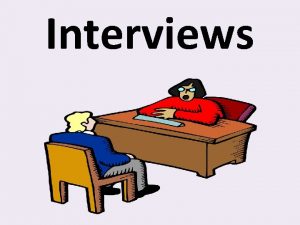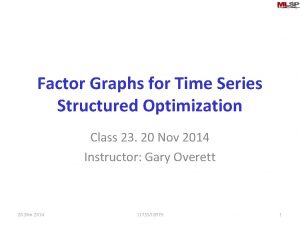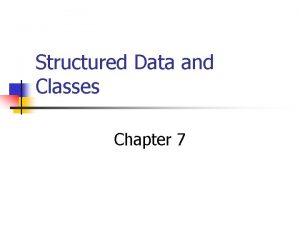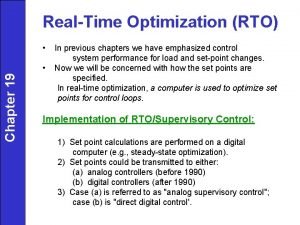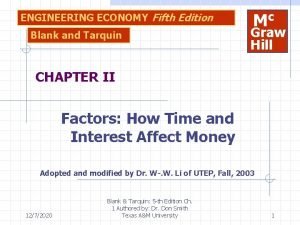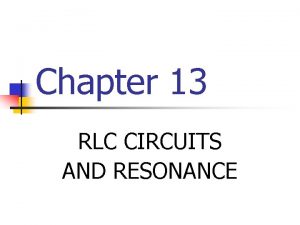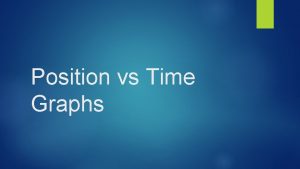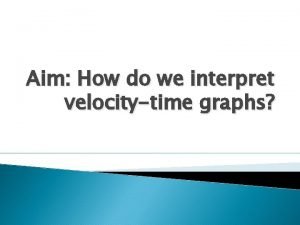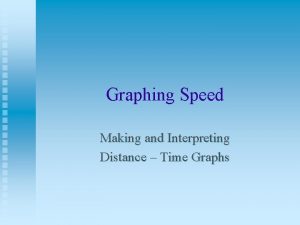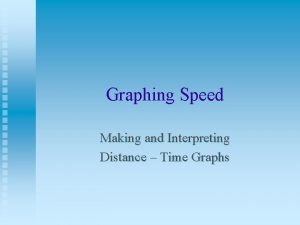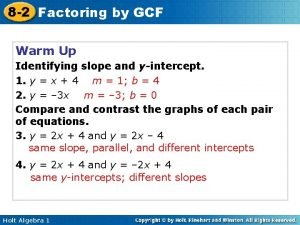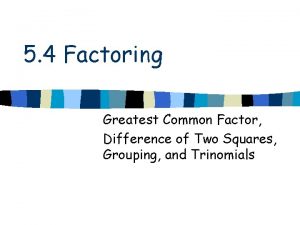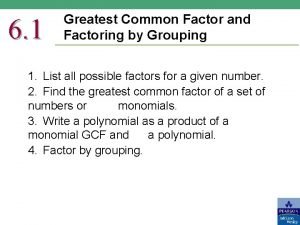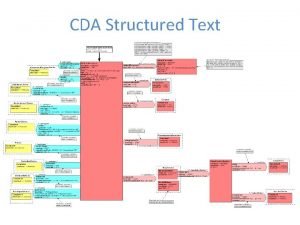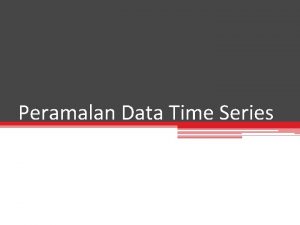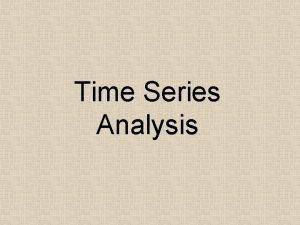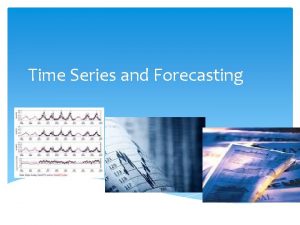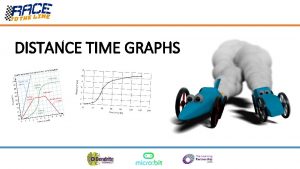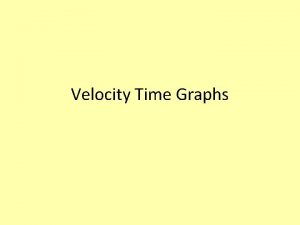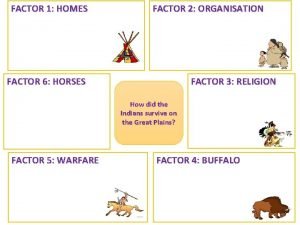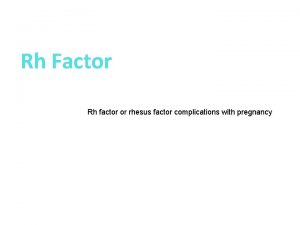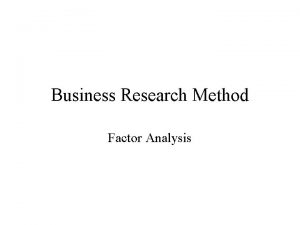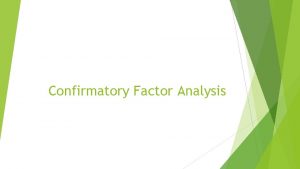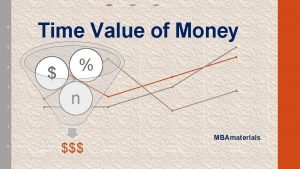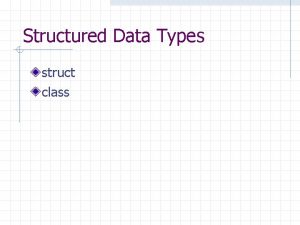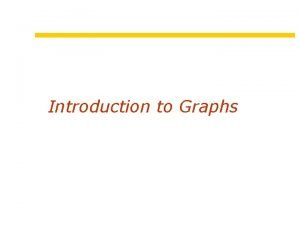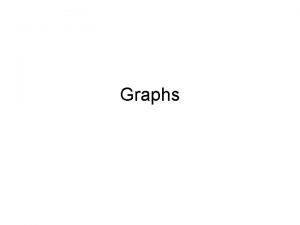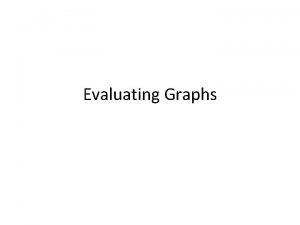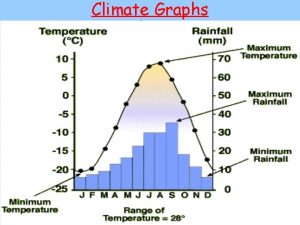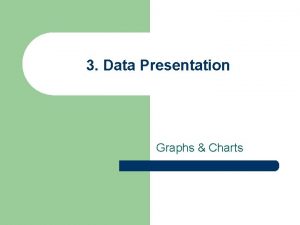Factor Graphs for Time Series Structured Optimization Class

















































































- Slides: 81

Factor Graphs for Time Series Structured Optimization Class 23. 20 Nov 2014 Instructor: Gary Overett 20 Nov 2014 11755/18979 1

Machine Learning Context …according to infallible Wikipedia! Source: http: //en. wikipedia. org/wiki/Machine_learning 20 Nov 2014 11755/18979 2

Machine Learning Context …according to infallible Wikipedia! Source: http: //en. wikipedia. org/wiki/Machine_learning 20 Nov 2014 11755/18979 3

Where we are exploring today? Source: http: //en. wikipedia. org/wiki/Machine_learning 20 Nov 2014 11755/18979 4

What might you know about your “signal(s)”? • • • Gaussian Distribution Made up of Independent Components Face-like Clustered Sparse Locally Smooth (or should be!) 20 Nov 2014 11755/18979 5

What might you know about your “signal(s)”? • • Gaussian Distribution Made up of Independent Components Face-like Clustered Sparse Locally Smooth (or should be!) Choose or derive your constraints! 20 Nov 2014 11755/18979 6

The more I know about my signal (or the signal I am trying to estimate) the more constraints I’m able to reasonably apply! 20 Nov 2014 11755/18979 7

General vs. Domain Specific Constraints • • • General Gaussian Independent Smooth Non-Negative Sparse • • 20 Nov 2014 11755/18979 Domain Specific N-Gram Speech Model (cat-sat-on-the-? ->mat) Connectedness (Handconnected-to-arm etc. ) Ballistic Trajectory Prediction Vehicle Motion Model (cars-goforward/backwards not 8 sideways)

Consider the following ‘signal’ We want to know the position of a survey vehicle in the real world. Given the following time-series information: • • GPS location data at 1 Hz (may suffer dropout) Wheel Encoder Odometry Measurements every 2 m Inertial Sensor Measurements (Gyroscope) every 2 m Basic Vehicle Geometry (wheel base width etc. ) 20 Nov 2014 11755/18979 9

Vehicle Localization (Pose) Estimation • • 20 Nov 2014 11755/18979 GPS Odometry Gyroscope Vehicle Motion Constraints 10

Use case : Vehicle/Camera Pose for Asset Localization 20 Nov 2014 11755/18979 11

Kalman Filter : Fail! 20 Nov 2014 11755/18979 12

Kalman Filter 20 Nov 2014 11755/18979 13

Certainty Over Time (Odo+GPS) Credit: “Factor Graphs and GTSAM: A hands on introduction”, Frank Dellaert 20 Nov 2014 11755/18979 14

Certainty Over Time (Odo only) Credit: “Factor Graphs and GTSAM: A hands on introduction”, Frank Dellaert 20 Nov 2014 11755/18979 15

Kalman Filter : Fail! 20 Nov 2014 11755/18979 16

Survey Vehicle : Signal Behavior • GPS Suffers Dropout, Noise and Discontinuities • Odometry is very robust but multiple paths can explain a given odometry • Gyroscope is has a high precision but ‘drifts’ • Vehicles travel along relatively smooth paths. Normal operation excludes lateral (sideways) motion. • These constraints suggest a structured (graphical) prediction approach. 20 Nov 2014 11755/18979 17

Structured Prediction : Factor Graphs 20 Nov 2014 11755/18979 18

Factor Graphs Values – what we want to estimate 20 Nov 2014 11755/18979 19

Factor Graphs Values – what we want to estimate • • 20 Nov 2014 Vehicle Pose Error Corrected HDD Reader Output Image Segmentation Label Price of Apple Stock at time t etc. 11755/18979 20

Factor Graphs Values – what we want to estimate • • Vehicle Pose Error Corrected HDD Reader Output Image Segmentation Label Price of Apple Stock at time t etc. Factor(s) – a constraint we formulate 20 Nov 2014 11755/18979 21

Factor Graphs Values – what we want to estimate • • Vehicle Pose Error Corrected HDD Reader Output Image Segmentation Label Price of Apple Stock at time t etc. Factor(s) – a constraint we formulate • • 20 Nov 2014 Odometry Constraint Error Correcting Code Segmentation Prior (Green -> Trees) Todays stock price same as yesterday 11755/18979 22

Factor Graphs 20 Nov 2014 11755/18979 23

Factorization 20 Nov 2014 11755/18979 24

Example Factorization : Markov Chain 20 Nov 2014 11755/18979 25

Unifying View of… • • • Markov random fields Kalman Filters HMM’s Parity Codes Bayesian Networks 20 Nov 2014 11755/18979 26

Other notations Forney-Style Factor Graph Original Factor Graph U Z X U W Y Y Bayesian Network Markov Random Field U U X X W W Z Y 20 Nov 2014 Z X W Z Y 11755/18979 27

Bipartite Graph Original Factor Graph U Z X W Y Bipartite View W U X Y Z Values Factors 20 Nov 2014 11755/18979 • Factors encapsulate constraints being imposed • Values adjust to become consistent with these constraints • Usually achieved via “message passing”/gradient descent methods. 28

Optimization • • • Several algorithms are used Random vs “Best Guess” initialization Gauss-Newton Stepping Levenberg-Marquart Message Passing Algorithms Structure dependent/exploiting optimization strategies – ISAM 2 (for SLAM problems) 20 Nov 2014 11755/18979 29

Optimization X = 7. 85± 0. 5 X • Initialize values to a ‘best guess’/random • Iterate till convergence – Factors messages Values with Error – Values messages Factors 20 Nov 2014 11755/18979 30

Optimization X = 7. 85± 0. 5 X=0 • Initialize values to a ‘best guess’/random • Iterate till convergence – Factors messages Values with Error – Values messages Factors 20 Nov 2014 11755/18979 31

Optimization X = 7. 85± 0. 5 X=5 • Initialize values to a ‘best guess’/random • Iterate till convergence – Factors messages Values with Error – Values messages Factors 20 Nov 2014 11755/18979 32

Optimization X = 7. 85± 0. 5 X=7 • Initialize values to a ‘best guess’/random • Iterate till convergence – Factors messages Values with Error – Values messages Factors 20 Nov 2014 11755/18979 33

Optimization X = 7. 85± 0. 5 X=7. 5 • Initialize values to a ‘best guess’/random • Iterate till convergence – Factors messages Values with Error – Values messages Factors 20 Nov 2014 11755/18979 34

Optimization X = 7. 85± 0. 5 X= 7. 85 • Initialize values to a ‘best guess’/random • Iterate till convergence – Factors messages Values with Error – Values messages Factors 20 Nov 2014 11755/18979 35

Optimization, Factorization and Sparsity Measurement Jacobian 20 Nov 2014 11755/18979 36

Optimization, Factorization and Sparsity Measurement Jacobian 20 Nov 2014 11755/18979 37

Optimization, Factorization and Sparsity Measurement Jacobian 20 Nov 2014 11755/18979 38

Vehicle Pose Estimation 20 Nov 2014 11755/18979 39

GTSAM • Georgia Tech Smoothing and Mapping • State of the Art in SLAM, Bundle Adjustment, ICP 20 Nov 2014 11755/18979 40

GTSAM Credit: “Factor Graphs and GTSAM: A hands on introduction”, Frank Dellaert 20 Nov 2014 11755/18979 41

SLAM versus Localization • No “landmarks”, rather just GPS readings • Odometry is modeled via similar means • Vehicle Model is far more constrained in comparison to a typical robotic agent

ARRB Vehicle Introduction • GPS @ 1 Hz • Gyroscope, Acceleration, Odometry @ 2. 0 meters – 2 -axis gyro and 2 -D accel leading to somewhat under constrained problem • Images @ 2. 0 -5. 0 meters (unsynchronised to above) • Random Noise including non-real-time OS errors so unrestrained arbitrary corruption of the data is possible! 43

ARRB Vehicle Introduction 44

ARRB Vehicle Introduction • GPS @ 1 Hz • Gyroscope, Acceleration, Odometry @ 2. 0 meters – 2 -axis gyro and 2 -D accel leading to somewhat under constrained problem • Images @ 2. 0 -5. 0 meters (unsynchronised to above) • Random Noise including non-real-time OS errors so unrestrained arbitrary corruption of the data is possible! • This is the kind of great research problem that comes about on the back of greatly incompetent design! 45

Pose Estimation : GPS Factor 46

Pose Estimation : GPS Factor 47

Pose Estimation : GPS Factor 48

Pose Estimation : GPS Factor 49

Pose Estimation : GPS Factor 50

Pose Estimation : GPS Factor 51

Pose Estimation : GPS Factor 52

Pose Estimation : GPS Factor 53

Pose Estimation : GPS Factor 54

Pose Estimation : GPS Factor 55

Pose Estimation : GPS Factor Once you have defined all these you are ready to code your Factor in GTSAM 56

Pose Estimation : GPS Discontinuity 57

Pose Estimation : Vehicle Model Factor 58

Pose Estimation : Vehicle Model Factor Prediction with binary factor requires more than just pose information. Therefore we augment P with additional variables to track; time, speed and steering angle. 59

Pose Estimation : Vehicle Model Factor Prediction with binary factor requires more than just pose information. Therefore we augment P with additional variables to track; time, speed and steering angle. 60

Pose Estimation : Vehicle Model Factor Prediction with binary factor requires more than just pose information. Therefore we augment P with additional variables to track; time, speed and steering angle. Pose Prediction Model 61

Pose Estimation : Vehicle Model Factor Prediction with binary factor requires more than just pose information. Therefore we augment P with additional variables to track; time, speed and steering angle. ? ? ? Pose Prediction Model 62

Pose Estimation : Vehicle Model Factor Prediction with binary factor requires more than just pose information. Therefore we augment P with additional variables to track; time, speed and steering angle. Damping 63

Pose Estimation : Vehicle Model Factor Prediction with binary factor requires more than just pose information. Therefore we augment P with additional variables to track; time, speed and steering angle. 64

Pose Estimation : Vehicle Model Factor Prediction with binary factor requires more than just pose information. Therefore we augment P with additional variables to track time, speed and steering angle. 65

Pose Estimation : Vehicle Model Factor Prediction with binary factor requires more than just pose information. Therefore we augment P with additional variables to track; time, speed and steering angle. 66

Pose Estimation : GPS+Vehicle. . . 67

Pose Estimation : GPS+Vehicle. . . 68

Pose Estimation : GPS+Vehicle. . . Indeterminate System without time being constrained. 69

Pose Estimation : GPS+Vehicle+Time 70

Pose Estimation : Gyro. Odo Factor (R) 71

Pose Estimation : Gyro. Odo Factor (R) 72

Pose Estimation : Stationary Factor (S) 73

Optimization • Levenberg-Marquardt, i. SAM 2, others • Initialization sensitivities can require somewhat complex ‘rules of thumb’ to avoid undesired minima • Speed can be an issue • Without ground truth data or manual checking its always possible there are unpleasant surprises in the optimized output

Results : “Poser” From imagination to impact 75

Results : “Poser” - more than 2 mile dropout 76

Results : “Poser” - tested on > 40, 000 miles 77

Results : “Poser” - tested on > 40, 000 miles 2 known fail cases : ( 78

GICP : Kinect Sensor https: //www. youtube. com/watch? v=TY 99 Y_I_egg 20 Nov 2014 11755/18979 79

Factor Graphs : Round Up • Factor Graphs are great for expressing formally defined relationships (e. g. in SLAM we ‘know’ how GPS positions should relate to real world locations) • Highly General Tool – but its useful for building specific models/capturing prior knowledge you can formalize • Contrast with Neural Networks – both are graphical models but Neural Networks work to discover the unknown (or you are lazy) relationships as opposed to known ones. 80

Resources • GTSAM - https: //collab. cc. gatech. edu/borg/download • “Factor Graphs and GTSAM: A hands on introduction”, Frank Dellaert • Michael Kaess – GTSAM contributor now at CMU-RI (see https: //www. ri. cmu. edu/video_view. html? video_id=129&menu_id=387) • G 2 O – an alternative library for similar factor graph optimizations • Dimple – Graphical Modelling Tool http: //dimple. probprog. org/ 81
 Graphs that compare distance and time are called
Graphs that compare distance and time are called Disadvantages of unstructured interviews
Disadvantages of unstructured interviews What is sa/sd methodology?
What is sa/sd methodology? Encoding bugs in software testing
Encoding bugs in software testing Graphs that enlighten and graphs that deceive
Graphs that enlighten and graphs that deceive Polynomial end behavior chart
Polynomial end behavior chart Factor graphs and gtsam: a hands-on introduction
Factor graphs and gtsam: a hands-on introduction A class is an example of a structured data type.
A class is an example of a structured data type. Rto real time optimization
Rto real time optimization For minutes. start.
For minutes. start. Maclaurin series vs taylor series
Maclaurin series vs taylor series Heisenberg 1925 paper
Heisenberg 1925 paper Maclaurin series vs taylor series
Maclaurin series vs taylor series Maclaurin polynomial
Maclaurin polynomial Ibm p series server
Ibm p series server Series-series feedback amplifier
Series-series feedback amplifier Series aiding and series opposing
Series aiding and series opposing Arithmetic series formula
Arithmetic series formula Sanya armutlieva born
Sanya armutlieva born Uniform series present worth factor
Uniform series present worth factor Uniform series present worth factor
Uniform series present worth factor Q factor of series rlc circuit
Q factor of series rlc circuit Interpreting distance time graphs
Interpreting distance time graphs Increasing speed distance time graph
Increasing speed distance time graph Position vs time graphs
Position vs time graphs Superman
Superman Interpreting distance time graphs
Interpreting distance time graphs Depth time graphs
Depth time graphs Interpreting distance time graphs
Interpreting distance time graphs Oscalar
Oscalar 8-2 factoring by gcf
8-2 factoring by gcf Factor out the greatest common factor
Factor out the greatest common factor Peak factor formula
Peak factor formula Example of situation relating questions
Example of situation relating questions What is factored form
What is factored form Highest common factor of 12 and 42
Highest common factor of 12 and 42 Iso 22301 utbildning
Iso 22301 utbildning Typiska drag för en novell
Typiska drag för en novell Nationell inriktning för artificiell intelligens
Nationell inriktning för artificiell intelligens Ekologiskt fotavtryck
Ekologiskt fotavtryck Shingelfrisyren
Shingelfrisyren En lathund för arbete med kontinuitetshantering
En lathund för arbete med kontinuitetshantering Särskild löneskatt för pensionskostnader
Särskild löneskatt för pensionskostnader Vilotidsbok
Vilotidsbok Anatomi organ reproduksi
Anatomi organ reproduksi Förklara densitet för barn
Förklara densitet för barn Datorkunskap för nybörjare
Datorkunskap för nybörjare Tack för att ni lyssnade bild
Tack för att ni lyssnade bild Debattartikel struktur
Debattartikel struktur Delegerande ledarstil
Delegerande ledarstil Nyckelkompetenser för livslångt lärande
Nyckelkompetenser för livslångt lärande Påbyggnader för flakfordon
Påbyggnader för flakfordon Arkimedes princip formel
Arkimedes princip formel Offentlig förvaltning
Offentlig förvaltning Jag har gått inunder stjärnor text
Jag har gått inunder stjärnor text Presentera för publik crossboss
Presentera för publik crossboss Teckenspråk minoritetsspråk argument
Teckenspråk minoritetsspråk argument Vem räknas som jude
Vem räknas som jude Treserva lathund
Treserva lathund Mjälthilus
Mjälthilus Claes martinsson
Claes martinsson Cks
Cks Lågenergihus nyproduktion
Lågenergihus nyproduktion Bra mat för unga idrottare
Bra mat för unga idrottare Verktyg för automatisering av utbetalningar
Verktyg för automatisering av utbetalningar Rutin för avvikelsehantering
Rutin för avvikelsehantering Smärtskolan kunskap för livet
Smärtskolan kunskap för livet Ministerstyre för och nackdelar
Ministerstyre för och nackdelar Tack för att ni har lyssnat
Tack för att ni har lyssnat Referatmarkeringar
Referatmarkeringar Redogör för vad psykologi är
Redogör för vad psykologi är Matematisk modellering eksempel
Matematisk modellering eksempel Tack för att ni har lyssnat
Tack för att ni har lyssnat Borra hål för knoppar
Borra hål för knoppar Orubbliga rättigheter
Orubbliga rättigheter Formel för standardavvikelse
Formel för standardavvikelse Tack för att ni har lyssnat
Tack för att ni har lyssnat Steg för steg rita
Steg för steg rita Verksamhetsanalys exempel
Verksamhetsanalys exempel Tobinskatten för och nackdelar
Tobinskatten för och nackdelar Toppslätskivling effekt
Toppslätskivling effekt Mästar lärling modellen
Mästar lärling modellen

